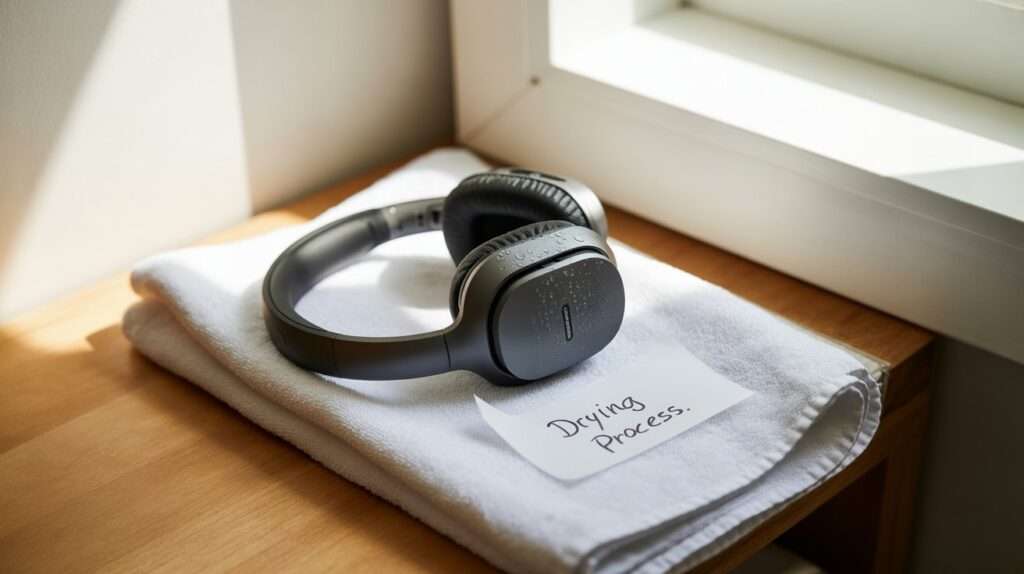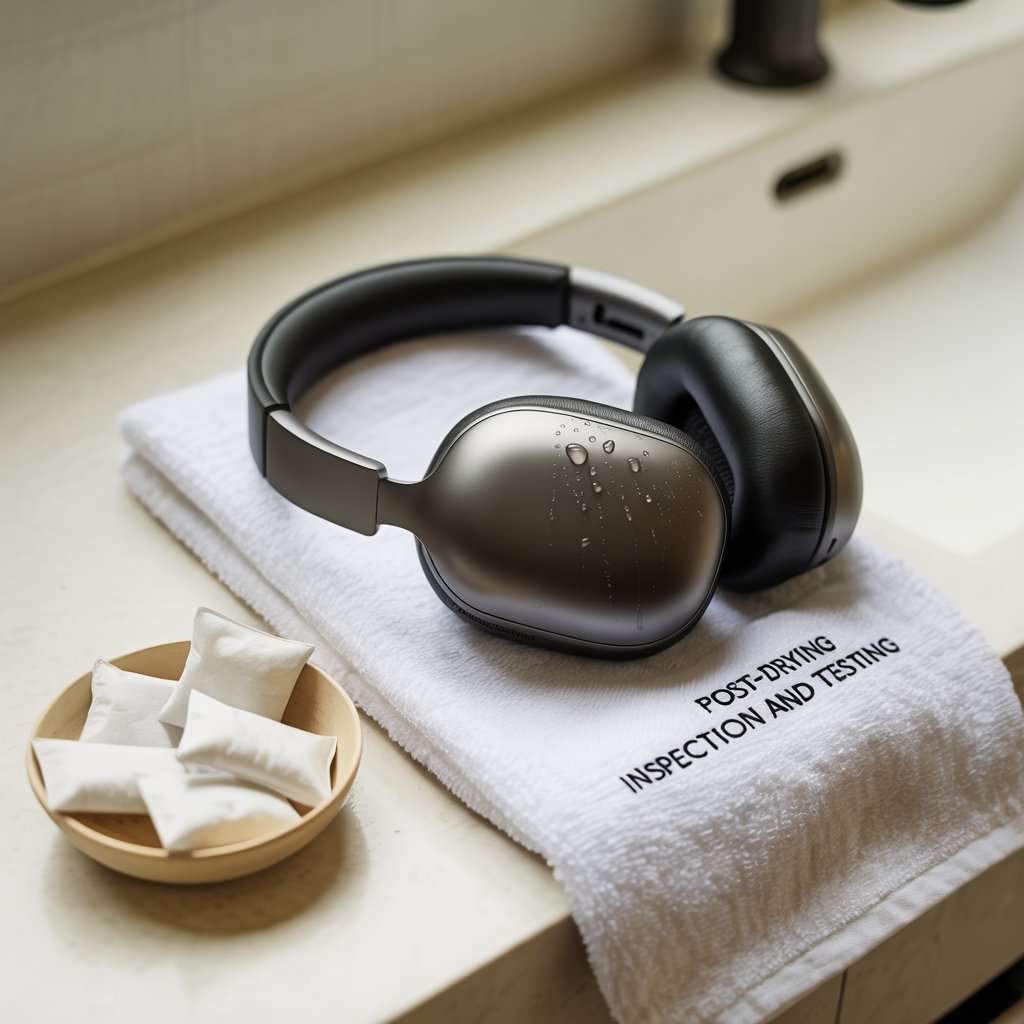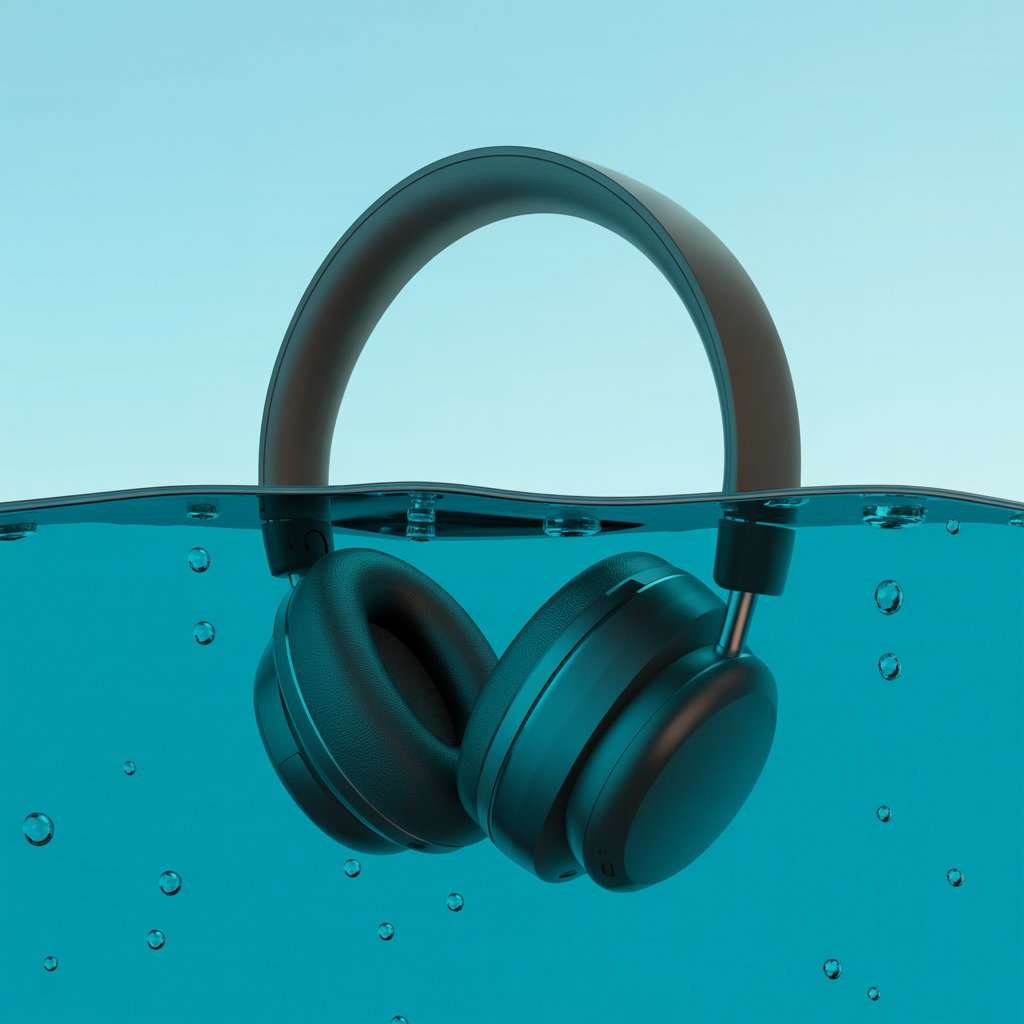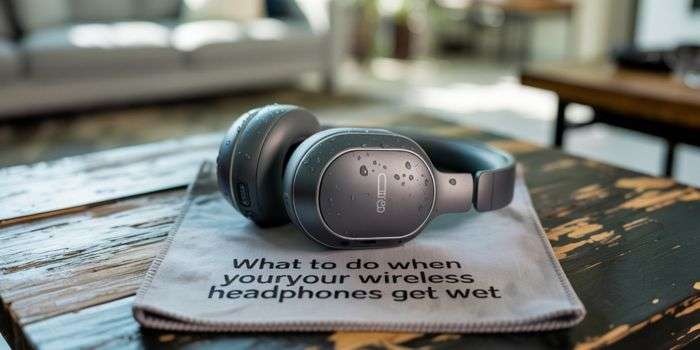One moment, you’re jamming out, the next splash your wireless headphones are swimming where they shouldn’t be.
A rogue rainstorm, a misstep near the sink, or a workout so intense it rivals a monsoon water finds its way. And when it does? Panic. Static. Silence. Moisture can muffle sound, kill connections, or fry them completely.
But don’t mourn them just yet. With swift, smart steps (and maybe a little luck), there’s hope. This guide walks you through exactly what to do—before damage becomes a sad, soggy eulogy. So take a breath, grab a towel, and let’s see if we can save your sound.
1. Immediate Actions

The first few minutes after your wireless headphones get wet are crucial. Acting swiftly can significantly increase the chances of salvaging them. Here’s what you should do immediately:
Power Off and Disconnect: If the headphones are powered on, turn them off immediately to prevent any electrical damage. If they are connected to a device, disconnect them to avoid short circuits or further issues.
Remove Detachable Parts: Take off any removable components such as ear tips or covers. This will expose areas where water might be trapped and allow for more thorough drying.
Shake Gently: Hold the headphones upside down and gently shake them to dislodge any water inside. Be cautious not to shake them too hard, as this could damage the internal components.
Wipe the Surface: Use a soft, lint-free cloth to blot away as much moisture as possible. Avoid using tissues or paper towels, as they may leave behind small fibers. Pay attention to crevices and hard-to-reach spots, using cotton swabs or compressed air to dry them out.
2. Drying Process

After taking the initial steps, the next phase involves drying the headphones thoroughly. Proper drying can take time, but it is essential to prevent corrosion and ensure all moisture is removed.
Air Drying: Place the disassembled headphones in a dry, well-ventilated area. Allow them to air dry for at least 24-48 hours. Ensure they are not exposed to direct heat sources like radiators or hair dryers, as excessive heat can cause further damage.
Desiccants: To accelerate the drying process, use desiccants such as silica gel packets or uncooked rice. Place the headphones in an airtight container filled with silica gel packets or bury them in a bowl of rice. These materials absorb moisture effectively. Leave them in the container for at least 24-48 hours to draw out any remaining moisture.
Dehumidifier: Using a dehumidifier in the room can also help to draw moisture from the headphones. Place the headphones near the dehumidifier, but not directly in front of it, to facilitate the drying process.
Avoid direct sunlight: While it’s important to dry the headphones, avoid placing them in direct sunlight, as this can damage the materials and internal components.
3. Post-Drying Inspection and Testing

Once the drying period is complete, carefully inspect the headphones for any signs of damage before testing them.
Visual Inspection: Check for any swelling, corrosion, or unusual signs, particularly around the battery area in wireless models. If the battery shows signs of bloating, the headphones may be beyond repair or could pose a safety hazard.
Functionality Test: After ensuring there are no visible issues, test the headphones with a device at a low volume. Gradually increase the volume to check for sound distortion, connectivity problems, or any other malfunctions.
Replace Parts: If any components are damaged or corroded, consider replacing them if possible. Check with the manufacturer or a professional repair service for replacement options.
Professional Help: If the headphones still exhibit issues after drying and testing, seek professional help. A qualified technician can assess the damage and provide further solutions or repairs.
4. Additional Tips and Related Solutions
- Do not attempt to operate or charge your headphones while they are wet; this could cause permanent damage or even safety hazards.
- Clean headphone surfaces gently with isopropyl alcohol (91%) if you suspect sweat or sticky residue, but avoid soaking them.
- If sound quality is muffled or distorted after drying, check for debris like earwax or dust blocking the speaker grills and clean gently with compressed air or a cotton swab.
- For persistent issues, consult the manufacturer’s service center for professional maintenance, especially if your headphones are under warranty.
5. Preventative Measures

To minimize the risk of water damage in the future, consider these preventative measures:
Waterproof/Resistant Models: When purchasing wireless headphones, opt for models with a high IP (Ingress Protection) rating, indicating their resistance to water and dust. These are designed to withstand exposure to moisture and sweat.
Proper Storage: Store your headphones in a dry place, away from humidity and potential water sources. Use a case or pouch to protect them when not in use.
Awareness: Be mindful of your surroundings and activities when wearing your headphones. Avoid using them in heavy rain, during water sports, or in other situations where they are likely to get wet.
Cleaning: Regularly clean your headphones with a dry, lint-free cloth to remove sweat and moisture buildup. This can prevent potential water damage over time.
Conclusion
Water and wireless headphones generally don’t mix well, but quick and careful action can save your device. Stop using the headphones immediately, remove detachable parts, shake out water gently, and dry thoroughly in a cool, ventilated area.
Using drying agents like rice or silica gel can help absorb hidden moisture. Avoid heat sources and do not charge or power on the headphones until completely dry.
If problems persist, seek professional help. With proper care, you can often restore your wireless headphones to working condition after water exposure.
Frequently Asked Questions
Q: Can I use a hair dryer to dry my wet wireless headphones?
A: It’s best to avoid using a hair dryer on hot settings because heat can damage internal components and batteries. Use cold air or let them air dry naturally in a ventilated space instead.
Q: How long should I wait before using my headphones after they get wet?
A: Wait at least 24 to 48 hours to ensure they are completely dry. Using them too soon risks short circuits and further damage.
Q: Will putting my headphones in rice really help?
A: Yes, rice or silica gel packets can absorb residual moisture inside your headphones, improving drying effectiveness.
Q: What if my headphones still don’t work after drying?
A: If problems persist, such as no sound or distorted audio, consult the manufacturer’s service center for diagnosis and repair.
Q: How can I prevent my wireless headphones from getting wet?
A: Avoid using them in heavy rain or near water sources, use waterproof or water-resistant models if needed, and always dry them off immediately if exposed to moisture.
By following these steps, you can increase the chances of saving your wireless headphones after they get wet and enjoy your music without interruption.
